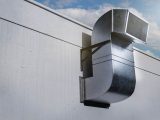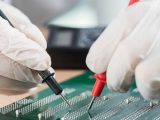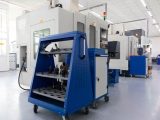
How CNC Turning Works in Modern Manufacturing
October 8, 2025 Off By adminEvery polished component starts life as a plain rod waiting for its moment in the spindle. CNC turning grips that blank and sculpts it through programmed paths, turning static stock into parts that slot smoothly into larger assemblies. This process is a cornerstone of CNC machining parts production, where precision and repeatability have become necessities. By automating the movement of the tool and the rotation of the workpiece, workshops can meet strict specifications without relying on guesswork or repeated trial runs. It is a mix of careful planning and controlled movement that gives modern manufacturing its steady rhythm.
Spinning Raw Stock into Real Parts
Turning might sound like a dance move, but in workshops, it is how round parts are born. A CNC turning machine holds a piece of raw metal and spins it at high speed while a cutting tool trims material away. The shape forms as the tool moves along set paths, like a pencil sharpening itself one layer at a time.
This method is different from milling, where the tool spins and the part stays still. With turning, the part does the spinning, making it ideal for shafts, bushings, and other cylindrical pieces. The steady motion allows smoother surfaces and precise diameters without much sanding after.
How CNC Turning Machines Maintain Accuracy
A CNC turning machine follows programmed commands written in G-code. These commands tell it how fast to spin, how deep to cut, and when to move the tool. Because it does not rely on manual control, it avoids the tiny shakes and slips that can appear in hand machining. The result is consistent dimensions even on large batches.
Sensors track the spindle speed and tool position to make sure the part stays centred. This control prevents wobble, which can ruin roundness. The process creates parts that fit straight onto bearings, gears, and housings without extra adjustment.
Where CNC Turning Fits in Supply Chains
Many production lines depend on round parts to keep machines running smoothly. CNC machining parts such as pins, rollers, and couplings are common in pumps, vehicles, and packaging systems. These pieces must meet strict size limits to avoid friction and wear. Turning makes those parts uniform from the first piece to the thousandth. Shops can store the digital program and run it again whenever the same part is needed. This helps keep spare inventories consistent and reduces downtime when repairs are needed.
Why Turning Improves Workflow Efficiency
CNC turning is fast because it removes material in continuous streams instead of small chips. This lets machinists shape parts quickly without stopping to change tools often. A CNC turning machine can also handle several operations at once, such as facing, threading, and boring, which reduces setup time.
Shorter setup means less time waiting between stages. This keeps machines running more often and lowers idle costs. Even small batches benefit, as shops can switch from one part to another with minimal adjustments.
Keeping Turned Parts Within Tolerance
Accuracy matters because even a small size error can stop an assembly from working. Machinists measure diameters, surface finishes, and thread depths after turning. Digital gauges and coordinate measuring machines help confirm that each piece matches its drawing. This checking is especially vital for CNC machining parts used in high-stress places like engines and gearboxes. A tight fit stops vibration, which can damage other components. By catching flaws early, shops save time and material that would be lost on scrap.
Monitoring and Tooling Updates in Modern Turning
Modern lathes come with automatic tool changers that swap cutters without stopping the job. Some even combine turning with live tooling, which lets them drill holes and mill flats while the part spins. This flexibility helps produce more complex shapes without moving the part to another machine. Linking turning machines to digital monitoring systems gives machinists live data on tool wear and spindle load. This information helps them adjust speeds and feeds to keep quality steady.
Skills That Keep Turning Lines Moving
Even with automation, turning depends on skilled machinists. They choose the right cutting tools, adjust the coolant flow, and listen for signs of chatter. Their experience keeps the machine running smoothly and prevents small problems from growing.
Training on CNC turning machines includes learning how metals react to heat and stress. This knowledge helps machinists pick the right cutting speeds to avoid warping or tool breakage. A mix of human skill and digital accuracy keeps production lines steady.
From Raw Rods to Finished Forms
CNC turning turns spinning rods into precise parts with clean finishes. It combines planned programming, steady rotation, and skilled oversight to keep factories supplied with reliable components. When each piece fits without fuss, assemblies go together faster and run longer. Contact Disk Precision Group to keep your production spinning smoothly with dependable turning expertise.








